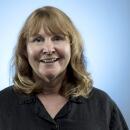High-Tech Firms Aim to Prepare Workers of Future : A shortage of math and science instructors prompts companies to help employees receive teacher training.
- Share via
By the time she reached her early 30s, Deb Olander had a bachelor’s degree in math, a master’s degree in operations research and seven years of experience with the Massachusetts-based Digital Equipment Corp.
Still, she felt restless and found herself “looking around for something new.” Two years ago, after returning from maternity leave for her first child, Olander joined Digital’s pioneering Engineers Into Education program.
After she took a 10-week seminar to explore teaching requirements and classroom conditions, the company contributed to her tuition and other costs at Harvard University, where she earned a teaching credential and a master’s degree in education. The company also provided a year’s salary and continued her medical, dental and life insurance benefits for a year.
Today, she teaches algebra and geometry at Ipswich (Mass.) High School and finds it enjoyable and challenging. “I probably would not be in teaching if not for Digital,” Olander said.
Concerned about the prospects of filling their work forces through the next century and mindful of the nationwide shortage of qualified math and science teachers--expected to reach 300,000 by 1995--a small but growing number of high-technology-oriented firms are looking to their own employees and recent retirees to help fill the gap.
Polaroid, IBM, Pacific Telesis and AT&T; also have experimented with programs aimed at helping some of their employees become teachers. In Southern California, Rockwell International teamed up with Cal State Dominguez Hills in 1990 and began a project, paid for by the aerospace giant, in which Rockwell retirees could earn teaching credentials in math and science. This school year the California Mathematics and Science Teacher Corps Project has been expanded and modified, with three other area high-tech firms--Hughes Aircraft Co., McDonnell Douglas Corp. and TRW--joining Rockwell in paying for the $4,000-per-employee program.
The idea of using college-educated high-tech workers to ease the math and science teacher shortage was endorsed in a 1987 report by the Educational Testing Service and the Service Corps, a volunteer organization of retired executives. The study was financed by the Carnegie Foundation for the Advancement of Teaching, which also put up $400,000 for pilot programs. With the recent downsizing in the defense and aerospace industries, more high-tech workers have begun looking at other careers, including teaching.
Burton Goodrich, director of Digital’s three-year-old program, which has sponsored 115 employees, said the company considers the program an investment in its future. “We need to be sure there are students in the pipeline” to fill technical jobs, he said.
The National Education Assn., the nation’s largest teachers union, looks favorably upon such programs as long as they meet three conditions, said Shari Francis, a senior NEA policy analyst. They should lead to a bona fide--not “emergency”--credential, include plenty of classroom exposure early on so prospective teachers get a realistic idea of what the job requires, and ensure that the employees are hired under the same terms as other teachers.
“We think it is very important to bring people with different kinds of experiences into the profession,” Francis said. “But being a scientist is not the same as being a science teacher, and we would want to be sure that (those making a career transition) have a good background in how to teach, how to assess and motivate students, how to recognize and adjust to different learning styles.”
Robert DeVries, the Cal State Dominguez Hills education professor who is director of the project with local aerospace firms, said program leaders learned important lessons from their first efforts.
Of the original 15 participants, only one finished the program and took a full-time teaching job. Most participants in the second class, which is under way, are younger and have been more carefully screened. Further, the project is being coordinated with several local school districts and includes exposure to a wide range of schools and students.
“We wanted to get them into many different classroom settings as early as possible so they will have an idea of the reality they will face,” said DeVries, who is optimistic that all 18 current participants will get jobs as fully credentialed math teachers when they finish the program near the end of this year.
More to Read
Inside the business of entertainment
The Wide Shot brings you news, analysis and insights on everything from streaming wars to production — and what it all means for the future.
You may occasionally receive promotional content from the Los Angeles Times.











